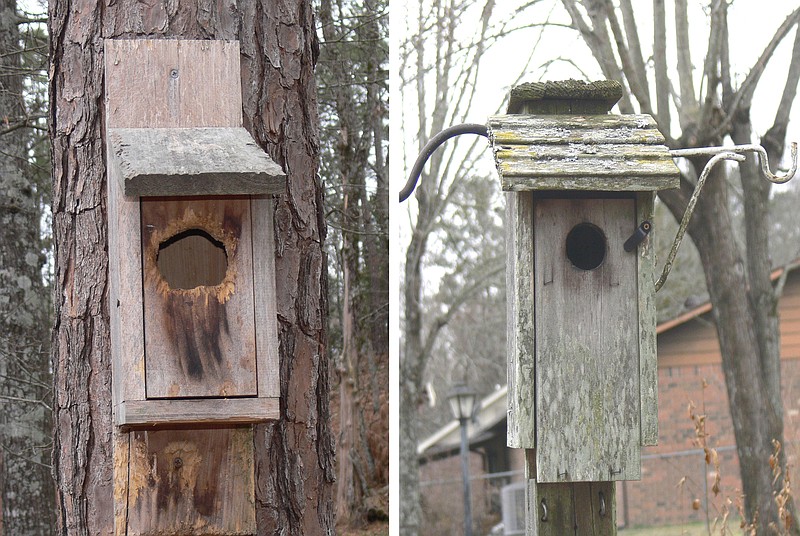During the recent snowstorms, ARBird-L participants posted about finding dead bluebirds in their bluebird boxes.
Bluebirds are cavity-nesting birds, but they do not typically remain in a cavity or nesting box when they are not laying eggs and raising young. In harsh weather, however, they seek protection. In this storm, Eastern bluebirds — the species seen in Arkansas — roosted in birdhouses.
I saw a pair flying in and out of a nesting box behind my house while the snow was falling. I had never been able to attract bluebirds to that particular box during the five years I have lived in Hot Springs.
When the snow stopped, I went to check on them. I found a dead male bluebird in the bottom of the box. A dead female was on the ground in front of the box.
The nesting box was empty of the pine straw that bluebirds typically use to build their nests, though there were ample pine needles beneath the blanket of snow. The pine straw might have provided some insulation, had it been there. The opening into that birdhouse had been enlarged by earlier occupants — woodpeckers, nuthatches and flying squirrels — and I wondered if that enlarged opening made the box too drafty.
I checked inside five bluebird houses maintained by my neighbors in their yards. The openings in all of those houses were the recommended 1 ½ inches in diameter, not the almost 3-inch opening in mine. They held no dead birds. One box was littered with droppings of birds that roosted there out of the cold (the old nest had been removed and that box cleaned with vinegar water in December).
My across-the-street neighbor did discover two dead goldfinches in her yard, but not in nesting boxes.
Marty and Wayne Lynch have four active, well-maintained bluebird boxes on their spacious property in Hot Springs, and as officers of the Garland County Audubon Society, they help look after another 18 bluebird boxes at the water treatment plant. As luck would have it, the Lynches had just cleaned out all of those boxes a few days before the storms.
On Feb. 17, they found five dead bluebirds in four boxes at their home, and three dead bluebirds among the 18 boxes at the treatment plant. They observed that most of the dead birds were males, but two were females; three birds were in one box.
They found no other species in the boxes but did find a frozen goldfinch on the ground at their home.
Garland County Audubon Society also keeps watch over bluebird nesting boxes at the recycling center. Jerry Davis checked them Feb. 27, one week after most people in Hot Springs were able to get their cars back onto the roads. Among eight boxes, he found dead birds in only one box. It held four dead male bluebirds and one dead female. Another dead female was beyond a nearby chain-link fence, and two females were on the ground at the base of the box.
The report from the Hot Springs Village Audubon group was not quite so bleak.
Cathy Jurek oversees the Village's extensive bluebird program on the golf courses. She says that "in the 79 nesting boxes I checked after the snow, I found no dead bluebirds, but one deceased brown-headed nuthatch." Some of the other nesting box monitors who report to her found three dead bluebirds. Based on droppings in boxes, she estimates 10% of the bluebird boxes were used for roosting during the harsh weather.
